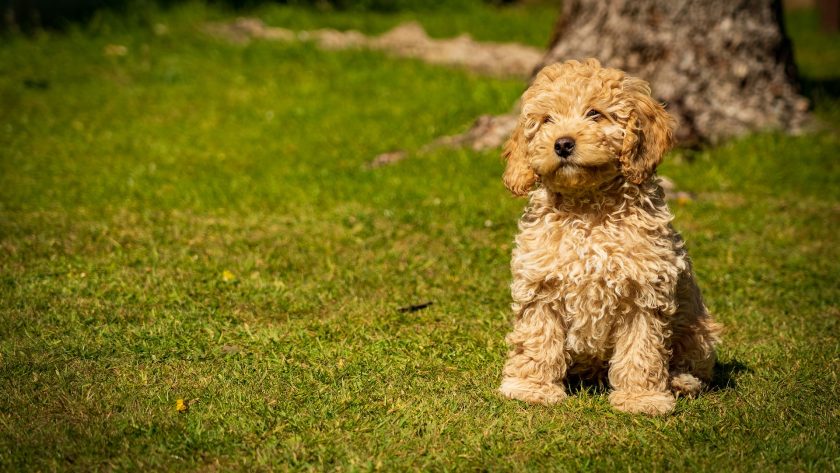Poodles are a wonderful breed; however, unlike other dog breeds, they need special care and a lifestyle to grow happy and healthy. Grooming is one of the vital things that your Poodle needs to function properly. Here we shall discuss the steps that you can take to groom your Poodle at home. Without further ado, let’s dive in…
-
Brush Your Dog Hair
Brush your canine companion as it is necessary for all dogs, but it is especially important for poodles. That is because poodle hair can easily clump together as the dog sheds; it is frequently suggested that long-haired poodles be combed every day. If the dog has shorter hair, brushing once or twice a week is usually sufficient.
Begin brushing the Poodle’s neck and work your way down to the tail. Brushing your dog daily not only maintains its hair looking beautiful but also outputs force dead hair, reduces shedding, removes matting, and spreads natural oils in the skin, all of which contribute to your dog’s overall health.
-
Brush the Teeth of Your Dog
If dogs’ teeth are not cleaned regularly, they develop bad breath. Remove plaque buildup around the base of your Poodle’s teeth using a toothbrush. Select toothpaste designed particularly for dogs. Avoid human toothpaste as your Poodle will certainly ingest some of the toothpaste, which can irritate its stomach.
Brushing your Poodle’s sensitive gums too forcefully or too quickly can cause pain, so make sure that you brush gently. Maintain a consistent dental routine for your Poodle. Brushing your dog’s teeth will also help prevent tartar formation, which promotes periodontal disease and can result in life-threatening bacterial infections. Brush your Poodle’s teeth at least twice a week with dog toothpaste.
-
Bathing
Bathing your Poodle is crucial for your dog’s grooming. Place your dog in the tub with the water temperature set to lukewarm. Fill up its coat with water and use poodle shampoo to wash it thoroughly. It’s better to go with a natural substance that is soft on the skin. Shampoos with oats can be beneficial to sensitive skin. Shampoos for Poodles are usually gentler and can be used on adult dogs as well.
Start at the back of the coat and work your way down to the top of the head, chest, underbelly, tail, and feet. Allow the shampoo to sit on the hair for five to ten minutes. Cleaning the snout and sensitive areas around the eyes with a washcloth is a gentle and effective method.
Wash thoroughly, but do not get too much water in your dog’s face or ear canal. A final rinse with a gallon of warm water and 14 cups of vinegar can be used to eliminate extra oil or any strange odours your dog may have. Apply a natural conditioner to your dog’s hair. This will preserve the moisture in the coat and make it shine. Allow five to ten minutes for the conditioner to work.
-
Drying
When it comes to dog grooming, drying might be one of the most difficult processes.
Every dog is unique, not only in terms of coat type but also in terms of personality. The blow dryer does not appeal to all dogs. Many dogs are terrified of the noise.
It is important to ensure that the dog is as relaxed as possible while drying. This will keep it safe from anxiety, tension, and injury. Dog groomers have numerous choices for ensuring that the dog is dried in a safe and pleasant environment. Allowing dogs to air dry is another option.
-
Your Dog’s Nails Should Be Cut
Prepare your dog for this one by placing it on a table or even on your lap. Determine where the nail quick begins before you begin. The quick is the area of the nail where blood capillaries are found. Your dog may bleed if this portion is cut, and it may take several weeks for it to heal correctly.
Cutting your dog’s nails regularly can cause the quick to retreat, allowing you to trim the nails shorter. If you can clip your dog’s nails on a weekly or biweekly basis, you’ll likely notice greater results, have a less anxious dog and suffer less stress yourself.
A decent rule of thumb is to clip or have your dog’s nails trimmed as often as necessary to keep their nails from touching the floor when they’re standing.
-
Clean the Ears
After you have finished drying your dog’s fur, clean its ears to ensure they are dry and clear of wax buildup. To avoid bacteria growth, it is critical to keep the ears dry at all times, so this extra check may be necessary.
The ear of a dog has a distinctive structure, and one must be careful not to go too far since they risk damaging the eardrum, leading the dog to become unbalanced and lose his hearing.
Pour the ear solution into the dog’s ears and gently massage the base of the ear to remove excess dirt and wax in the ear canal to save time when cleaning the ears. If you let go of your hands, your dog is likely to shake its head, which could damage your clothes.
-
Your Dog’s Coat Should Be Trimmed
It takes a lot of consideration, care, and patience to groom your dog’s coat. Make the trimming process more enjoyable by providing a variety of extra rewards.
Also, you should keep easy tools to cut your dog’s hair at home, such as curved/ straight scissors, clippers etc. You should always start cutting your dog’s hair from neck to tail. By getting perfect cutting tools, you can give your dog an amazing haircut at home.
-
Keep a Close Eye on Your Puppy’s Skin
Poodles’ skin is normally highly sensitive. Brushes should be soft and mild so that your fur baby does not develop skin discomfort during brushing sessions.
You should brush their coat regularly because mats can trap dirt against the skin and trigger an infection. Infections are annoying and uncomfortable, and they must be treated by a vet. You obviously do not want to put your pet through that. Keep an eye out for itchy areas on your pet, as well as redness, welts, and other indicators of skin infections.
Conclusion
Following all the steps to groom your Poodle can be difficult but not impossible. Knowledge of the best grooming tools and how to use them can assist you in completing the task with minimal stress for both you and your companion dog




